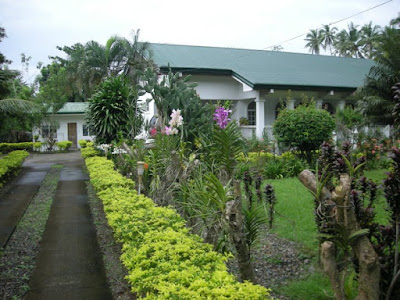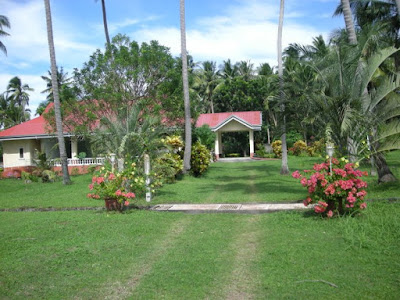Last week news of President Biden Plan on lowering drug prescription costs
reminded me of my article about drug development in the US.
I
wrote this article a decade ago today. I believe the contents of this
article is still valid today except the costs and success rate.
Development of New Drugs in the United States Schematic
 Image from medscape.com
Image from medscape.com
As a retired FDA involved in the development of new drugs in the Division of Anti-Infective Drug Products, Office of New Drug Chemistry, I had often been asked by several of my blog readers to write a summary and an overview of new drug development in the US. I had been postponing it, because I thought the subject is confidential, but when I started browsing in the WEB today, I found several articles on the subject. I even found a Chemistry manufacturing supplement that I had approved several years ago. The letter of approval and the chemist review was printed in the Internet. However, the specifics of the supplement was erased in the approval letter as well as in the chemist review. The patent of the drug discussed had expired, so it is open to generic companies, otherwise the chemist review and letter of approval will never be made public. I am getting out of the subject, but let me start on the subject right now.
New Chemical Entity (NCE) development
Broadly the process can be divided into pre-clinical and clinical work.
Pre-clinical.
New Chemical Entities (NCEs)(also known as New Molecular Entities (NMEs)) are compounds which emerge from the process of drug discovery. These will have promising activity against a particular biological target thought to be important in disease; however, little will be known about the safety, toxicity, pharmacokinetics and metabolism of this NCE in humans. It is the function of drug development to assess all of these parameters prior to human clinical trials. A further major objective of drug development is to make a recommendation of the dose and schedule to be used the first time an NCE is used in a human clinical trial ("first-in-man" (FIM) or First Human Dose (FHD)).
In addition, drug development is required to establish the physicochemical properties of the NCE: its chemical makeup, stability, solubility. The process by which the chemical is made will be optimized so that from being made at the bench on a milligram scale by a synthetic chemist, it can be manufactured on the kilogram and then on the ton scale. It will be further examined for its suitability to be made into capsules, tablets, aeresol, intramuscular injectable, subcuteneous injectable, or intravenous formulations. Together these processes are known in preclinical development as Chemistry, Manufacturing and Control (CMC).
Note: The CMC portion of was my primary function as the Team Chemistry Leader during my employment with FDA
Many aspects of drug development are focused on satisfying the regulatory requirements of drug licensing authorities. These generally constitute a number of tests designed to determine the major toxicities of a novel compound prior to first use in man. It is a legal requirement that an assessment of major organ toxicity be performed (effects on the heart and lungs, brain, kidney, liver and digestive system), as well as effects on other parts of the body that might be affected by the drug (e.g. the skin if the new drug is to be delivered through the skin). While, increasingly, these tests can be made using in vitro methods (e.g. with isolated cells), many tests can only be made by using experimental animals, since it is only in an intact organism that the complex interplay of metabolism and drug exposure on toxicity can be examined.
The information gathered from this pre-clinical testing, as well as information on CMC, and is submitted to regulatory authorities (in the US, to the FDA), as an Investigational New Drug application or IND. If the IND is approved, development moves to the clinical phase.
Clinical phase.
Clinical trials involves three steps: Phase I trials, usually in healthy patients, determine safety and dosing Phase II trials are used to get an initial reading of efficacy and further explore safety in small numbers of sick patients Phase III trials a large, pivotal trials to determine safety and efficacy in sufficiently large numbers of patients
The process of drug development does not stop once an NCE begins human clinical trials. In addition to the tests required to move a novel drug into the clinic for the first time it is also important to ensure that long-term or chronic toxicities are determined, as well as effects on systems not previously monitored (fertility, reproduction, immune system, etc.). The compound will also be tested for its capability to cause cancer (carcinogenicity testing).
If a compound emerges from these tests with an acceptable toxicity and safety profile, and it can further be demonstrated to have the desired effect in clinical trials, then it can be submitted for marketing approval in the various countries where it will be sold. In the US, this process is called a New Drug Application or NDA. Most NCEs, however, fail during drug development, either because they have some unacceptable toxicity, or because they simply do not work in clinical trials.
As this drug discovery process becomes more expensive it is becoming important to look at new ways to bring forward NCEs. One approach to improve efficiency is to recognize that there are many steps requiring different levels of experimentation. The early phase of drug discovery actually has components of real innovation, components of experimentation and components that involve set routines. This model of Innovation, Experimentation, and Commoditization ensures that new ways to do work are adopted continually. This model also allows the discipline to use appropriate internal and external resources for the right work.
Costs
Studies published by diMasi et al in 2003 report an average pre-tax cost of approximately $800 million to bring a new drug (i.e. a drug with a new chemical entity) to market. A study published in 2006 estimates that costs vary from around $500 million to $2 billion depending on the therapy or the developing firm. A study published in 2010 in the journal Health Economics, including an author from the US Federal Trade Commission, was critical of the methods used by diMasi et al but came up with a higher estimate of ~$1.2B. Critic Marcia Angell, M.D., a former editor of the New England Journal of Medicine, has called that number grossly inflated, and estimates that the total is closer to $100 million. A 2011 study also critical of the diMasi methods, puts average costs at $55 million.
Success rate
Candidates for a new drug to treat a disease might theoretically include from 5,000 to 10,000 chemical compounds. On average about 250 of these will show sufficient promise for further evaluation using laboratory tests, mice and other test animals. Typically, about ten of these will qualify for tests on humans. A study conducted by the Tufts Center for the Study of Drug Development covering the 1980s and 1990s found that only 21.5 percent of drugs that start phase I trials are eventually approved for marketing. Now you know why the drugs you purchased in the pharmacy is very expensive ( except the generic drugs). Most Americans will not be able to afford new drugs if they do not have insurance.
The mission of FDA is to enforce laws enacted by the U.S. Congress and regulations established by the Agency to protect the consumer's health, safety, and pocketbook. The Federal Food, Drug, and Cosmetic Act20 is the basic food and drug law of the U.S. With numerous amendments it is the most extensive law of its kind in the world. The law is intended to assure consumers that foods are pure and wholesome, safe to eat, and produced under sanitary conditions; that drugs and devices are safe and effective for their intended uses; that cosmetics are safe and made from appropriate ingredients; and that all labeling and packaging is truthful, informative, and not deceptive.Code of Federal Regulations (CFR)
Code Of Federal Regulations (CFR)21. The final regulations published in the Federal Register22 (daily published record of proposed rules, final rules, meeting notices, etc.) are collected in the CFR. The CFR is divided into 50 titles that represent broad areas subject to Federal regulations. The FDA's portion of the CFR interprets the The Federal Food, Drug, and Cosmetic Act23 and related statutes. Section 21 of the CFR24 contains most regulations pertaining to food and drugs.
Note: I hope you found the above posting informative. My next posting on this subject will be on the Chemistry, Manufacturing and Control(CMC) Requirements for IND's and NDA's. If you find this posting either boring or interesting, let me know via comments. Thank You.
Comment:
Anonymous said...You have a very informative article, I hope the FDA does not condone your site for writing about their business. Would you know how much the FDA charges drug companies for testing each of their new drugs from start to finish? This must cost them a bundle because, FDA employs a plethora of highly educated doctors, scientists, mathematicians and business people. Jeffrey Ray
A very interesting interview about the development of new drugs by Dan Skovronsky, Director of Research and Development, Eli Lily.- Meanwhile enjoy this photo from my collection-My Pineapple in my front Patio almost ready to be harvested.
 -
-














































